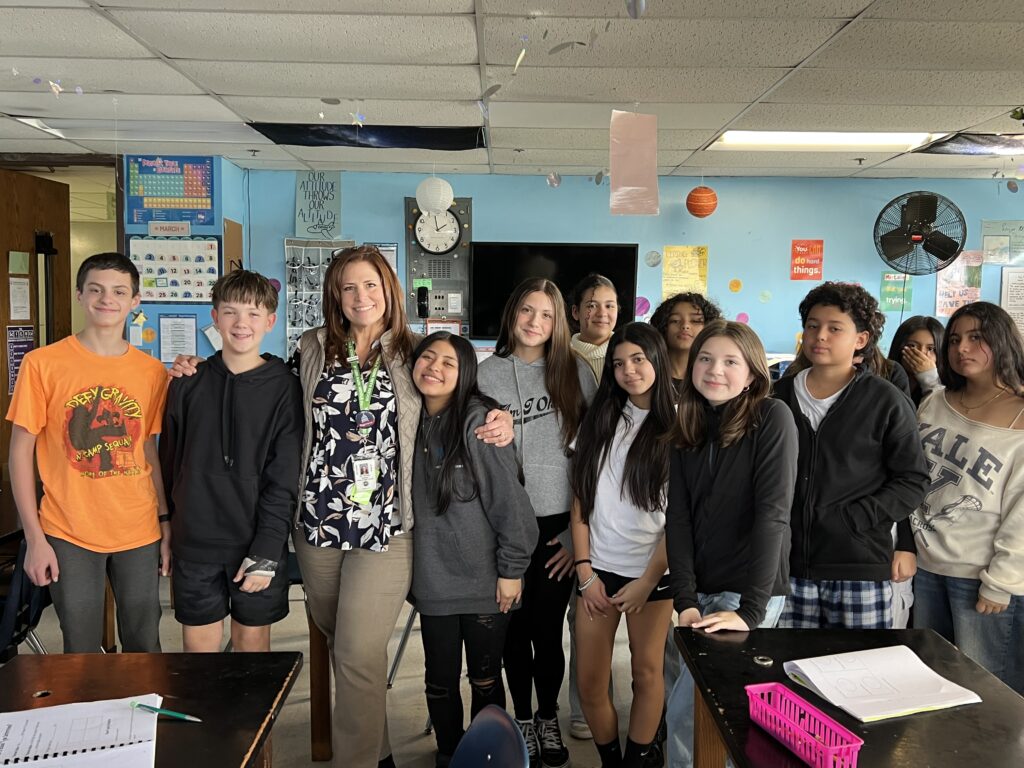I’ve spent most of my career as an educator at Rogers Park Middle School in Danbury, CT, including the last seven years as principal. A big thing I’ve always believed in, as a teacher and an administrator, is student voice. One way to incorporate student voice into how we teach and learn is to seek regular feedback from them.
To make that more systematic, a few years ago, we came up with the idea of student ambassadors. We’re a middle school with about 900 students. The idea is to pick 15 to 18 of them as ambassadors each year. We’re not necessarily looking for the students who are popular, academic stars, or active in all sorts of activities. Instead, we’ve asked teachers to look for quiet leaders who have the potential to do amazing things. Maybe they’ve haven’t always used their talents wisely—I mean, these are middle schoolers—or maybe they haven’t realized they can be leaders.
The results have been amazing. We’re a highly diverse school, and our ambassador group reflects that. Ambassadors are not afraid to discuss complex issues like race and culture, and more practical subjects like our dress code and cell phone policies. Of course, they have ideas about the dress code. For example, they wanted students to be allowed to wear flip-flops and Crocs and hats and hoodies. I have the ultimate say as principal, but some of their suggestions made sense. My thinking is that if you want to wear pajama bottoms to school, you can, if you engage in school. We can’t allow flip flops, however, because our school is a three-story building with concrete steps, and flip flops are a safety hazard. But Crocs are OK. Students can’t wear hoodies, though, because we need to see their faces, but baseball caps are allowed.

Students’ discussions about a cell phone policy were just as valuable. The students themselves are the ones who have said phones in class can be distracting. They don’t think everyone should be able to use their cell phone every minute of every day, so they suggested they not be allowed during instruction. Phones are allowed during lunch, but one thing we’ve seen is that the students want to be outside using play equipment or playing sports or just being kids. Some of them are still on their phones, playing games or listening to music, but everyone gets to do what they need.
One unexpected benefit from the ambassador program will help with teacher recruitment. An ambassador who has amazing video editing skills worked with other students to create a video thanking all our staff.
When I was at an NASSP conference for Principal of the Year, another school leader mentioned a video her students had made about why her school is great. I told my ambassador we should do that too, and she just jumped right on it and talked to teachers, staff, and students. We now have a short video that will be shared online and that our HR department will use to tell prospective teachers why they should work in our building and in our district.
Our ambassador program has been a huge success here, and it’s something other school leaders might want to pursue. One thing to keep in mind is letting go of control. Trust the process and don’t be afraid to fail. We learn from failures and move forward.
You do need buy-in from teachers. They must understand the vision for the program. By looking beyond the students who are quiet and do all their work, you’ll get feedback and ideas from new student leaders, and that will make your school better.


